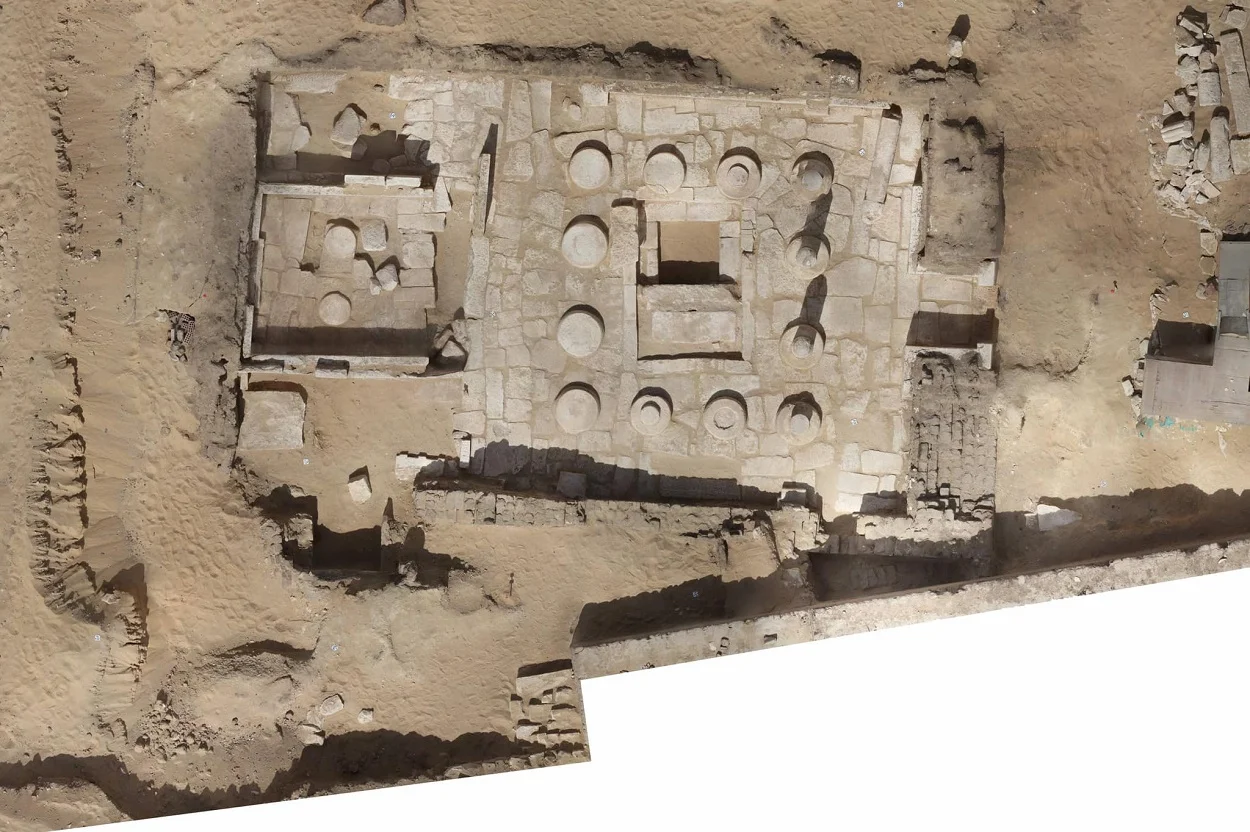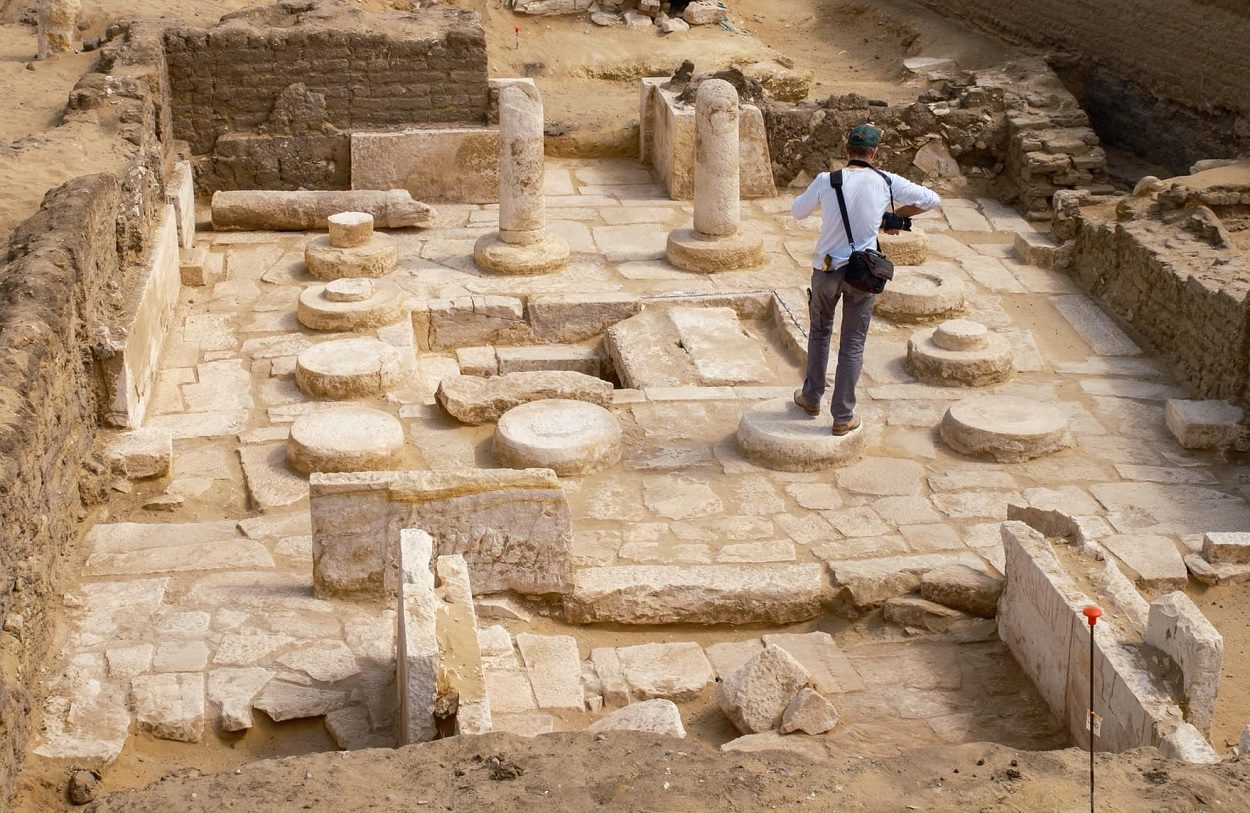A joint archaeological mission, led by researchers from the Leiden Museum in the Netherlands and the Egyptian Museum in Turin, have discovered a high-status tomb in the Saqqara necropolis, Egypt.
Saqqara served as the necropolis for Ancient Egyptian royalty and their extended family during the Old Kingdom period. During the New Kingdom from the 18th Dynasty onward, the necropolis was used by many high-status officials from Memphis.
The tomb belonged to an individual named Panehsy, “administrator of the temple of Amon” and dates from the 19th Dynasty (1292 BC to 1189 BC) when the New Kingdom of Egypt reached the zenith of its power under Seti I, and his son, Ramesses II.

The tomb has the appearance of a small temple, with a central courtyard measuring 13 x 8 metres, a surrounding colonnade (two of which are partially standing), and a central shaft leading to the burial chambers.
The upper structure has mud brick walls measuring 1.5 meters in height and feature ornate limestone revetment slabs adorned with reliefs of the tomb owner, his wife, various priests, and offering bearers.

A relief carving depicts Panehsy worshipping the cow goddess Hathor with his wife at an offering table, along with a funerary priest wearing a leopard skin and sprinkling water in honour of the deceased couple.
Excavations to the east side of the Panehsy monument led to the discovery four chapels, one of which mentions: Yoeyoe, “creator of the gold plate of the pharaoh’s treasure”, while another chapel features a sculpted portrayal of the tomb’s owner and his family.
Ministry of Tourism and Antiquities
Header Image Credit : Ministry of Tourism and Antiquities





